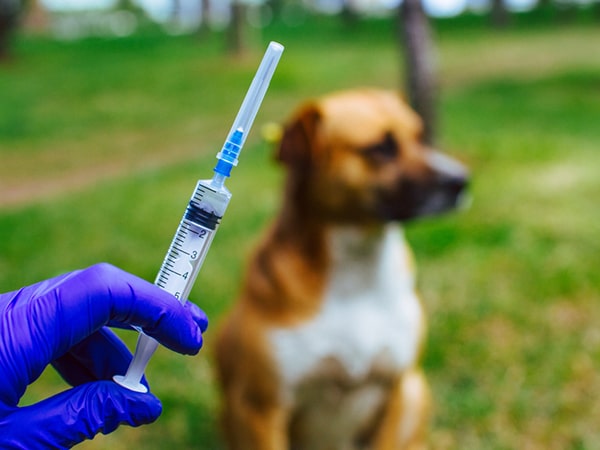Every day, thousands of strays struggle to survive.
Whether they’re living on the street or in a shelter, these animals are often neglected and overlooked by society.They don’t have anyone looking out for them, yet they continue to show resilience and courage as they fight for their lives.
Unfortunately, many people overlook strays due to a lack of knowledge about their plight; however, it’s important that we open our hearts and minds to understand their struggles better so that we can help them get the care they deserve.
Table of Contents
Understanding The Stray Problem
Stray animals are a major problem in many cities around the world. Pet overpopulation, caused by such things as irresponsible owners or accidental litter, has been an issue for decades. The financial costs of dealing with these strays can be tremendous; resources must be allocated to capture and feed them, spay/neuter them if necessary, and provide shelters for those that cannot find homes.
The result of this is thousands of homeless cats and dogs roaming the streets every day. These animals often lack proper nutrition and medical care leading to poor health conditions like dehydration, malnutrition, parasites, and disease. In addition to creating animal suffering, they create safety risks due to increased numbers of aggressive animals competing for food sources on roadsides or garbage cans.
It’s clear that communities need effective strategies to reduce pet overpopulation so stray populations don’t continue to grow out of control.
Humane education programs teaching responsible pet ownership should be part of any comprehensive plan along with robust low-cost spaying/neutering services which will help keep unplanned litters from being born into homelessness. With thoughtfully composed initiatives, we can make progress towards reducing the number of strays living on our streets indefinitely.
The Challenges Of A Stray’S Life
Although it is sad to think about, strays face the harsh reality of trying to survive in a world that wasn’t designed with them in mind. While caring citizens may wish they could help these cats and dogs directly by providing food and shelter or adopting them into their homes, many are not able to do so due to time restraints or other considerations. The only long-term solution for helping strays involves trapping cats and forming feral colonies as part of a Trap Neuter Return (TNR) program.
The challenges of a stray’s life are numerous.
Many must battle hunger on a daily basis while some have to contend with harsh environmental conditions like extreme heat or cold temperatures which can be dangerous if left unchecked. Additionally, there may be issues related to health care such as injuries, illnesses, parasites, and diseases that need treatment but go unaddressed. Of course, there is also the very real danger posed by predators such as coyotes and foxes who may seek out an easy meal at the expense of vulnerable strays.
Fortunately, TNR programs offer hope for our feline friends living on the streets since this approach allows for sterilization which reduces breeding rates within colonies over time and provides humane care including vaccinations against disease and medical treatments when necessary. Furthermore, advocates often work together to provide outdoor shelters offering warmth during winter months along with quality nutrition sources year-round through community feeders and managed colonies where volunteers keep watch for any incidents requiring intervention.
With careful planning and support from dedicated individuals willing to step up – even just a little bit – we can make significant strides towards improving the lives of strays everywhere by bringing awareness to their plight and actively participating in efforts aimed at reducing populations responsibly; thereby enabling those already here now lead more fulfilling lives free from pain and suffering wherever possible.
The Importance Of Spaying And Neutering Pets
Spaying and neutering pets is an important part of being a responsible pet owner. It helps reduce the number of strays living on the streets, prevents animal cruelty, and provides cats and dogs with better health outcomes.
When female animals are spayed, their uterus and ovaries are removed so that they can no longer reproduce. Neutering male animals involves removing the testicles to prevent reproduction. These procedures not only help control stray populations but also provide numerous benefits to both cats and dogs in terms of overall wellness.
Spayed or neutered pets tend to live healthier lives because they have fewer chances of getting certain types of cancers related to hormones.
Additionally, spay/neuter procedures can improve behavior by reducing aggression in male dogs, which often leads to fewer biting incidents and other destructive behaviors associated with dominance-related issues.
The act of spaying and neutering not only improves pet welfare but also reduces instances of animal cruelty as strays become more manageable due to diminished aggressiveness from constant scavenging for food or mating challenges between competing males. In addition, sterilization reduces the risk of spreading contagious diseases among animals since it eliminates their ability to reproduce thus breaking the cycle of transmission for those infections that require direct contact between animals for infection transferral.
Responsible pet owners should be aware that these medical interventions will ultimately result in happier, healthier animals while helping cut down on potential sources of suffering such as overpopulation leading to inadequate access to resources including food, water, shelter, and medical attention for feral cats and dogs living on city streets
The Benefits Of Adopting A Stray
The act of spaying and neutering pets is essential for population control but it doesn’t mean that every pet needs to come from a breeder. Adopting a stray can also provide all the love, companionship, and emotional support that any other pet could offer.
Adopting a stray comes with its own set of rewards:
- It often costs less than purchasing an animal from a breeder or rescue organization.
- Lost pets may have been through difficult situations, so they are more likely to be grateful for the second chance at life you are providing them with.
- You don’t have to worry about the potential health problems associated with inbreeding as would happen if purchased from a breeder or pet store.
- You’re helping reduce overcrowding in shelters by giving homeless animals homes instead of adding additional strain on existing facilities.
Strays can make incredibly loyal and loving companions since they appreciate having someone take care of them who was not part of their original environment
where neglect or abuse may have occurred before being rescued.
Finding a new home for strays isn’t just rewarding for both parties involved; it’s also beneficial to the community around them.
Shelters depend on foster families and adoptions to help keep lost pets off the streets and out of harm’s way – something which benefits everyone living within proximity to strays who might otherwise become aggressive towards people due to fear or confusion over their situation.
As such, when given proper attention and care, these former street cats and dogs can become integral members of your family while simultaneously improving their neighborhood too!
How To Help Stray Animals
Helping stray animals can be a daunting task, but one that is ultimately rewarding. While it may seem like an uphill battle to help these creatures who have been abandoned and are now struggling to survive on their own, there are some steps you can take to make a difference.
Taking the time to understand pet abandonment and trapping methods will go a long way in providing relief for your local strays. Pet abandonment is still unfortunately common today and often results when owners either cannot or choose not to provide care for their animal companions. This means taking measures such as spay/neuter services and education about responsible pet ownership can reduce the number of homeless animals in any given area.
Trapping feral cats is another effective method if relocation of the population is necessary in order to keep them safe from harm or ensure they receive proper food and medical care. Humane traps should be used instead of lethal control options so that cats can then be taken into shelters where they can find homes with loving families.
By understanding how best to trap cats humanely, caring people everywhere have an opportunity to work together to improve the lives of stray animals around them. At times, helping strays may feel overwhelming; however, through knowing more about pet abandonment prevention practices and humane trapping techniques anyone can become involved in making positive changes for our four-legged friends!
Creating A Foster Home For Strays
Creating a foster home for strays is an important part of providing much-needed care to animals in need. With volunteer programs and pet transport, it’s possible to bring these beloved creatures into homes where they can be given the attention and love that they need.
Here are three things that you should consider when creating your own foster program:
- Find volunteers– Many people want to help out homeless pets but don’t have the resources or time necessary to adopt them outright. Having dedicated volunteers who can provide temporary housing and transportation will go a long way toward making sure these animals get the treatment they deserve.
- Provide all necessary supplies– When selecting potential fosters, make sure they understand exactly what their responsibilities are going to be during their short period with the animal. Being clear upfront about expectations such as food, medical care, exercise, etc., will ensure that everyone involved is on the same page from day one.
- Develop relationships with shelters & rescue organizations– This step is key since many of these organizations work hard every single day to save strays from overcrowded facilities or dangerous environments. Building partnerships with local rescues and shelters will allow more room for new intakes while also helping create a larger network of support for both animals and humans alike. By taking steps like these, anyone can become part of a team that helps give abandoned animals safe places to call home—even if only temporarily! Foster programs are a great way to spread awareness about adoption options while giving loving care in the process; no small feat!
Feeding And Caring For Strays
Now that you have established a foster home for strays, it’s time to focus on their care. Feeding and caring for strays is an important responsibility and one that should not be taken lightly.
Proper nutrition is key when it comes to the health of your furry friends. Providing them with quality pet food ensures they are getting the essential vitamins and minerals they need to stay healthy and active. You also want to make sure they have access to clean water throughout the day as well.
In addition to food and water, you will need to provide adequate home care for your strays. This includes:
- Providing comfortable bedding
- Grooming needs such as brushing or bathing
- Regular exercise opportunities
- Mental stimulation through playtime activities
- Veterinary checkups when needed
- Most importantly – lots of love!
By giving these animals all the necessary attention they deserve, you can create a safe and nurturing environment in which your homeless companions can thrive.
Vaccinations For Stray Animals
Straying animals can be a difficult problem to solve, but volunteer programs and animal transport services are helping communities around the world. The right resources and support can make all the difference in keeping these animals safe and healthy.
Here’s how volunteer programs and animal transports help:
Volunteer Programs:
- Provide vaccinations to stray animals
- Educate volunteers on proper care for strays
- Assist with fostering or re-homing strays
Animal Transport Services:
- Allow rescuers to move animals across long distances quickly & safely
- Offer access to larger adoption networks when needed
- Give owners an easier way to reunite lost pets with their families
These initiatives are making it much easier for rescue organizations, shelters, and pet owners alike to ensure that stray animals get the care they need.
Thanks to this increased awareness, more people than ever before are joining forces – from veterinarians, volunteers, foster homes, and adopters – everyone is playing a part in giving homeless cats and dogs a better life.
Socialization Of Stray Animals
Having a pet can bring us joy, but it’s important to remember that not all animals have the same luxury of being in loving homes. Pet overpopulation is an issue that many countries face, and stray animals are left without proper care or protection.
When these strays end up on the streets, they’re faced with behaviors that may be difficult for them to adapt to. To illustrate this point, consider our own beloved cats and dogs – when we get them as puppies and kittens, we socialize them so they learn how to properly interact with their environment. But if strays don’t receive the same kind of early socialization, it can make adapting to new situations much harder.
They might become scared easily or resort to aggressive behavior due to fear or lack of trust in humans. Oftentimes people will try to take in a stray animal only for it to turn out too wild and unmanageable because it was never given the chance to develop essential social skills growing up.
This highlights just how vital it is for animal shelters and rescue organizations to provide basic training courses for these pets before rehoming them into permanent families. It’s also a reminder for us all about why spaying/neutering your pets is such an important part of responsible ownership – reducing pet overpopulation means fewer homeless animals who have been deprived of learning normal social behaviors from their environment.
This doesn’t just help animals live better lives; it decreases health risks posed by uncontrolled animal populations as well as reduces noise pollution caused by wild animals living on city streets.
Spreading Awareness Of Stray Animal Welfare
Spreading awareness of stray animal welfare is a vital part of keeping these animals safe. One way to do this is to educate people about pet hoarding, which can be an issue for strays as well as other types of pets.
To help prevent this form of animal abuse, it’s important that the public understands how dangerous having too many pets in one space can be both for their health and safety. For example, overcrowding leads to limited food and water resources, making them vulnerable to disease or malnutrition. It also increases stress levels among the animals, leading to fighting and aggression.
Raising awareness amongst potential adopters is another key component when it comes to protecting stray animals from harm.
By educating people on responsible pet ownership such as spaying/neutering, proper nutrition, and providing adequate shelter, they are more likely to make better decisions before bringing home a new furry friend.
Additionally, if someone already has multiple pets at home but can no longer take care of them, then encouraging them to reach out for help will reduce the chances of any unwanted litter being born into poverty-stricken conditions.
Making sure strays have access to medical attention is equally essential in ensuring their well-being. This includes vaccinations against rabies, fleas, and ticks; regular checkups with a vet; and treating any existing injuries or illnesses until fully recovered.
Providing healthcare not only safeguards both humans and animals from diseases spread by strays but it also helps create healthier populations in our communities over time by reducing suffering caused by untreated medical issues like organ failure or infections.
In order to protect the lives of stray animals everywhere we must commit ourselves to raising awareness around these topics so that everyone can work together towards creating an environment where all creatures receive compassion and respect regardless of their origin or circumstance.
Understanding Animal Laws And Regulations
It may seem that rescuing strays is all rainbows and butterflies, but one must also consider the implications of taking in an animal without understanding the laws and regulations surrounding pet ownership.
It’s ironic how much effort goes into helping animals, yet so little energy is put into learning about the legal terms that could potentially make or break an individual’s ability to keep their beloved pet safe.
In many cities around the world, there are strict rules governing pet ownership which should be taken seriously by those who wish to provide a forever home for their furry friends. Pet legislation can range from limits on how many animals can be owned per household (animal hoarding laws) to microchipping requirements as part of registration processes.
Failing to abide by these rules could result in hefty fines or even worse – having your pet taken away from you. Thus, it is important to do your due diligence and figure out what kind of paperwork needs to be filled out when adopting a stray animal – after all, knowledge is power!
Knowing all this will ensure both you and your new companion have happy lives together while staying within the confines of the law.
Finding The Right Veterinarian For Strays
When it comes to finding the right veterinarian for strays, there are a few important considerations.
First of all, you should make sure that the vet is experienced in dealing with animals that don’t have owners.
This includes being able to identify signs of malnutrition or abuse and having knowledge about how best to provide medical care or even just comfort to these pets. You’ll also want to look into their background, such as whether they’ve worked at animal shelters before.
Another consideration when selecting a vet is what kind of services they offer and if those services will be beneficial for your stray pet’s needs. It can be helpful to know ahead of time if the clinic offers spaying/neutering services, vaccinations, other types of preventive care, emergency services, or even pet insurance.
Finally, you should consider cost when choosing a veterinarian for strays. Don’t forget to ask about any discounts available through charities and non-profit organizations dedicated to helping homeless animals receive necessary veterinary care. Additionally, some clinics may offer payment plans or sliding scale fees which could be useful depending on your budget situation.
Working With Local Animal Shelters
Having determined the right veterinarian for strays, it’s now time to move on to working with local animal shelters. To put it bluntly, this is a big step that requires careful consideration and preparation.
Pet proofing your home and becoming more educated on animal care are essential steps in readying yourself to be an effective advocate for animals in need.
First things first: pet-proofing your home should be done before bringing any new furry friends into the fold.
This means ensuring there are no dangerous or harmful items that might injure them; securing electrical cords away from their reach; minimizing access to toxic substances like cleaning products; and providing safe spaces where they can rest without disturbance. The goal here is to create an environment that’s both comfortable and secure for all of the pets you may take in – not just the ones you plan on keeping long-term.
Alongside pet-proofing, familiarizing yourself with animal-friendly resources will help make sure that every member of our four-legged family has everything they need to live comfortably and safely at all times. These could include local spay/neuter clinics, dog grooming services, doggy daycare centers, adoption programs, and more.
This way, once you’ve identified potential homes for these rescued strays, they’ll have access to whatever resources they require during their transition period as well as down the line if necessary – making sure everyone involved feels confident about taking such a big leap together.
Donating To Animal Charities
Many people are unable to take in strays, but there are still ways to help. One of the best ways is to donate money or supplies to a pet rescue organization or animal control office.
Most organizations welcome financial donations as well as items such as food, crates, and toys that can be used for animals in the shelter’s care. It is also possible to volunteer at these places; many shelters need volunteers who can spend time with the animals, clean cages and kennels, walk dogs, foster pets, or provide transportation.
No matter what type of donation or effort you make, it will directly benefit stray animals and those trying to find them homes. Donating does not have to be expensive: even small amounts of money or contributions like old blankets can make an enormous difference.
Every contribution helps support the important work done by rescues and animal control offices around the country.
By donating whatever we can – whether it’s our time, money, or resources – we all play a big part in helping save homeless and neglected animals from being euthanized. Each one of us has something valuable to contribute towards making sure every stray finds its forever home!
Rehoming Strays
The plight of strays is an ongoing global issue that can only be addressed through education and responsible ownership.
As we have discussed previously, donating to animal charities helps these homeless animals get the medical care they need. However, there are also many other ways to help not just those animals in shelters but also the numerous strays living on the streets or abandoned by their owners.
Allusion can be made to a popular saying “Give a man a fish and you feed him for a day; teach a man how to fish and you feed him for a lifetime” – this applies equally well when it comes to helping stray animals find homes.
Humane education, which focuses on teaching people about the humane treatment of animals and responsible pet ownership, plays an important role in this effort. This type of education often stresses the importance of spaying and neutering pets as one way to prevent overpopulation among strays.
It highlights why adopting from shelters instead of buying from breeders is far more beneficial both for the animal being adopted as well for reducing demand for puppies bred in puppy mills. Furthermore, it emphasizes the value of microchipping pets so that if lost, it’s easy to trace the rightful owner rather than adding another number to the already large population of homeless dogs and cats out there.
Humane education thus offers invaluable knowledge and resources that could go a long way in ensuring better lives for our furry friends who don’t have anyone else looking out for them except us humans. With such initiatives coupled with donations towards animal charities, much progress can be made in providing safety, food, shelter and ultimately loving homes for these strays all around us.
Conclusion
It is evident that stray dogs face numerous challenges that compromise their health, safety, and well-being. However, by adopting a dog through Bone Voyage Dog Rescue, you can help provide a safe and loving home for a stray dog in need. At Bone Voyage Dog Rescue, we are committed to providing shelter, care, and love to every dog that comes our way.
We urge you to consider adopting a stray dog and become part of the solution to this pressing issue. Every adoption through Bone Voyage Dog Rescue helps us continue our mission of rescuing and caring for stray dogs. By providing a forever home, you not only give a dog a second chance at life, but you also experience the unconditional love and loyalty that only a dog can give.
Don’t let the challenge of a stray dog’s life discourage you from adopting. With Bone Voyage Dog Rescue, we make the adoption process as easy and stress-free as possible. Visit our website to learn more about the dogs available for adoption and fill out an application today.
Together, we can make a significant impact on the lives of stray dogs. Join us in our mission to provide a loving home for every dog in need. Thank you for considering Bone Voyage Dog Rescue for your adoption needs.
Frequently Asked Questions
How Can I Tell If A Stray Animal Is Safe To Approach?
If you come across a stray animal, it’s important to approach it with caution.
To tell if the animal is safe to approach, look for signs of feral behavior such as growling or showing teeth.
If the animal doesn’t show these behaviors, then slowly move closer and offer some food from your hand.
Be sure to keep an eye on the animal’s body language; if at any point they become agitated, it’s best to back away instead of continuing contact.
You can also consider adopting the pet yourself or bringing them to a shelter that specializes in animal adoption so they have a chance of finding they’re forever home!
What Is The Average Lifespan Of A Stray Animal?
With the modern-day advancements in medical care, one might assume that a stray animal would have an average lifespan of at least 100 years.
Unfortunately, this isn’t the case – and in fact, strays often don’t even make it to their teens.
The lack of providing shelter and regular feeding habits can be attributed to why these animals suffer from more diseases and shorter lifespans than their domesticated counterparts.
It’s a sad truth, but hopefully, with enough awareness, we can help prolong the lives of our furry friends living on the streets.
What Are The Risks Of Taking In A Stray Animal?
Adopting a stray animal can be a rewarding experience, but it’s important to consider the risks before taking in an animal.
There is no guarantee that any pet you adopt will fit into your lifestyle and routine of care, so adopting from a rescue organization or shelter is recommended as they have processes in place for making sure the adopter and animal are well-suited for one another.
Additionally, depending on where the pet comes from, there may be medical conditions or behavioral issues that could require long-term treatment or extra resources.
It’s essential to be prepared for this possibility when considering the adoption of a stray animal.
What Is The Best Way To Introduce A Stray Animal To My Existing Pets?
Introducing a stray animal to existing pets can seem like an overwhelming task, but with the right socialization tips it doesn’t have to be!
With just a few simple steps you’ll have your furry friends getting along in no time.
First things first, make sure that any new pet has had all necessary vet checks and vaccinations before introducing them to other animals in the home.
Make sure to take introductions slow; start by allowing the pets to get familiar with each other’s scents from either side of a closed door or gate.
Gradually increase their contact over several days, ensuring both parties are comfortable at every step.
With patience and some creative thinking, you’ll soon be able to enjoy peaceful harmony between your four-legged family members!
Are There Any Resources Available To Help Cover The Costs Of Caring For A Stray Animal?
If you’ve taken in a stray animal and are looking for resources to help cover the costs of caring for them, there are several options available.
Many shelters offer ‘finding homes’ programs that provide discounts on adoption fees as well as low-cost or free spay/neuter services if you plan to keep your pet.
Other organizations may have trap-neuter-release (TNR) initiatives which can include vaccinations against certain diseases and flea treatments at no cost.
Additionally, some cities even offer subsidies towards pet care costs such as food, grooming, and medical expenses.











